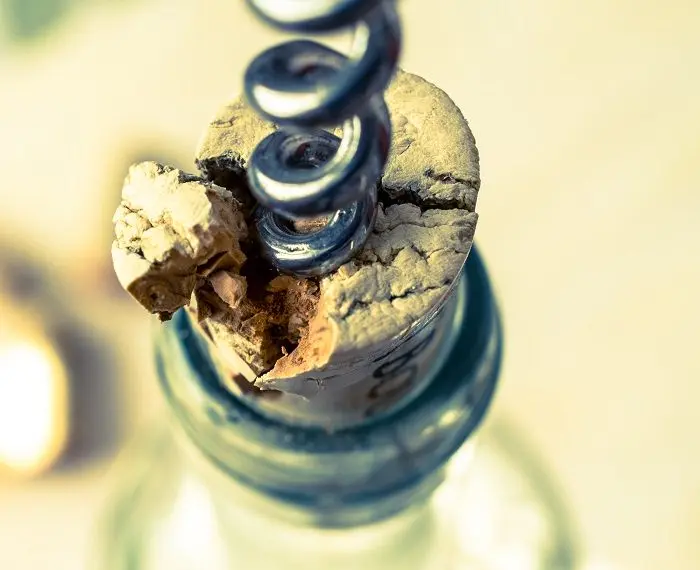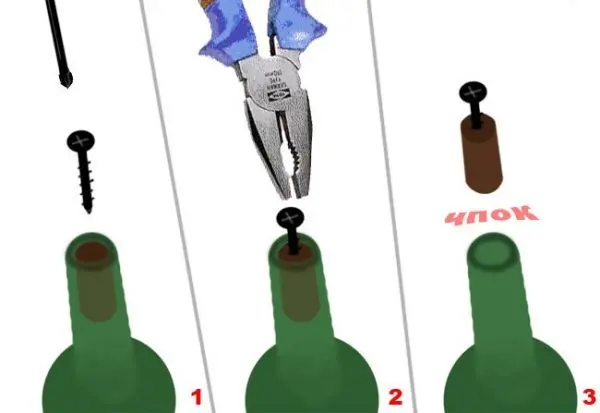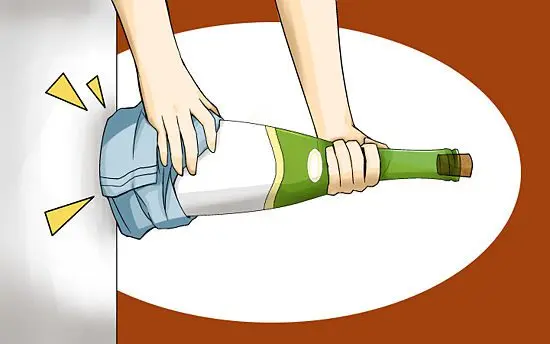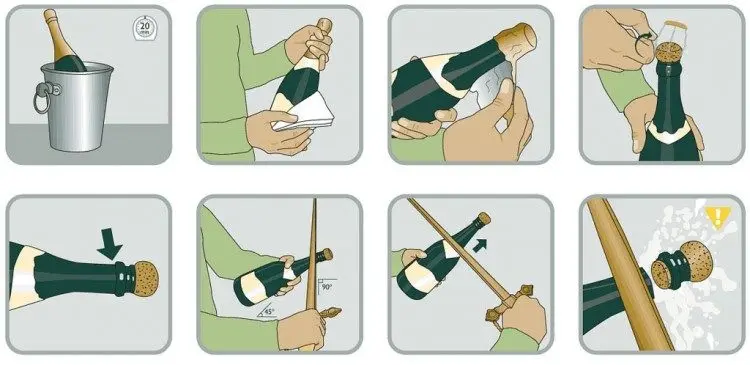Strictly speaking, the cork in champagne (another sparkling wine) rarely breaks, because it is not pulled out with a corkscrew, but is carefully unscrewed by hand, turning the bottle itself by the bottom. However, if the cork is not opened properly, the cork can crumble or break into several pieces. In this case, the following methods will help to open the bottle.

Causes of cork damage
- Mistakes when opening champagne. For example, if you twist not a bottle, but a cork, or pull too sharply.
- Incorrect storage of sparkling wine: the bottle should be placed in an inclined position, so that the wine wets the cork, otherwise it will dry out and get stuck.
- Poor quality cork. A plastic plug is unlikely to be a problem, but cheap wooden plugs can easily crumble and/or break even if done correctly.
Tips and parting words
- Removing a broken or stuck cork is always a bit of a lottery, with no guarantee of success. It is better to choose a spacious place for this venture without easily breaking objects and with washable surfaces.
- Clothing should be one that is not a pity – it is highly likely that spilled wine will ruin the outfit.
- To open a champagne with a broken cork, it takes much more time than under normal conditions. It is important not to rush and do everything slowly and carefully.
Ways to remove a broken cork
If the champagne cork is broken at the base, the bottle can be opened in the following ways.
1. Ordinary corkscrew. The wine must be pre-cooled, and the cork should be pulled out slowly and carefully, avoiding shaking the bottle. A corkscrew of the Charles de Gaulle type is best suited – with two levers.

2. Strong but thin knife. The blade is stuck into the cork at an angle of 45 degrees to a depth of about 2.5 cm, then the knife is slowly turned, loosening the cork. The blade does not replace the corkscrew, if done correctly, the stuck cork will fly out by itself. For safety reasons, it is best to wear gloves and keep the bottle away from your face. You can also use a self-tapping screw and pliers.

3. Shaking the bottle well and/or tapping the bottom on a hard surface. If the wine is warm enough, the rest of the cork will fly out on its own. It is advisable to pre-wrap the neck with a towel to avoid injury. The bottom too, otherwise you can accidentally break it. The method is bad because about a third of the sparkling drink will splash out along with the cork.

If the cork breaks in still wine, it will be faster not to pull it out, but, on the contrary, to push it inside. This method does not work with champagne – strong pressure in the bottle interferes.
4. Strike with a saber or knife. A beautiful way for the most courageous: a saber strike (popularly known as “hussar”). Of course, it is difficult to find a real saber in the kitchen; an ordinary heavy and sharp knife will do. A bottle cooled to 6-8 degrees must be firmly taken in one hand, holding it at an angle of 45 degrees, then with a sharp sliding movement from oneself, hit the neck with a blade (as when peeling a carrot). If everything is done correctly, the knife will pry off the neck at the seam and leave an even chip without glass chips.

The method also comes in handy when the champagne cork is intact but won’t open.

5. If there is neither a corkscrew at hand, nor a self-tapping screw capable of replacing it, it’s scary to open a bottle like a hussar, but it’s a pity to shake, you can pick out the remains of the cork with a fork, pliers or a screwdriver. You need to be extremely careful, as the cork can still fly out.
A serious disadvantage of this method is that the champagne is generously flavored with cork crumbs, so it is better to pour it into glasses through a strainer.









